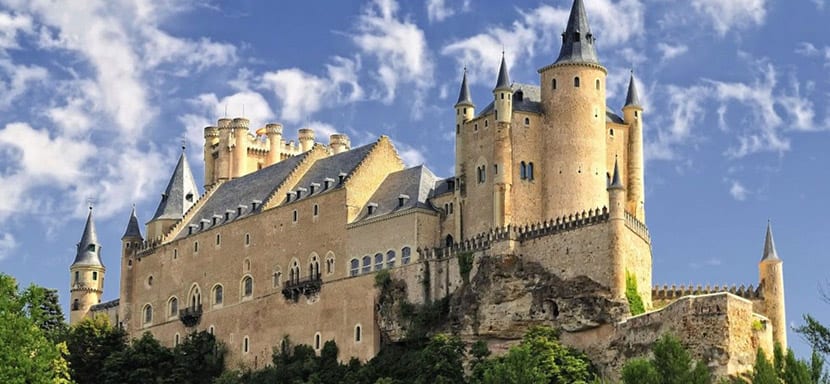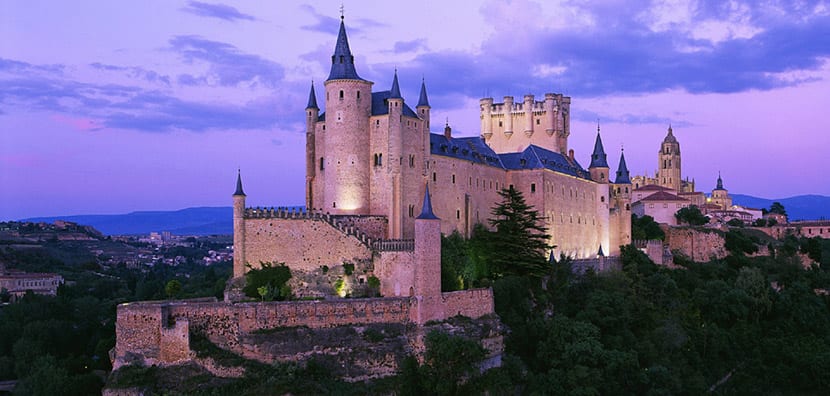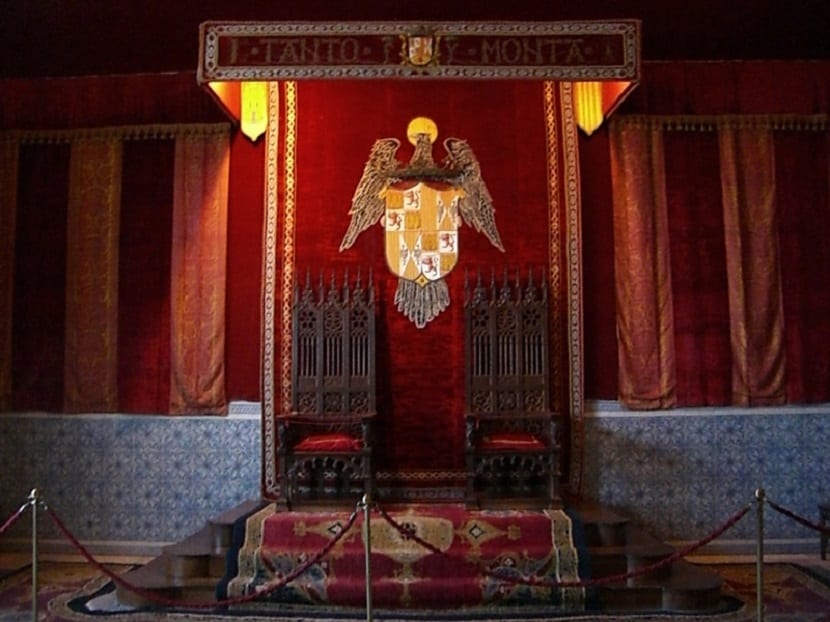
Between the Clamores and Eresma rivers, the Alcázar de Segovia rises on a rock, a medieval building of military origins that was also used as a residential palace. The existence of this fortress has been documented since the beginning of the XNUMXth century and throughout history, the different Spanish monarchs have been expanding and improving their infrastructures to achieve a unique silhouette, from a fairy tale, which makes the Alcázar a unique fortress compared to others. castles of Spain.
History of the Alcazar of Segovia
In the place, remains of granite ashlars similar to those of a Roman aqueduct have been found, which suggests that in ancient Roman times there was already a fortification or a fortress here. On the remains of this, the fortress was raised as a Spanish-Arab fortress and there were numerous times that it was expanded and restored by successive kings such as Alfonso X or Felipe II. The latter owes its current fairy tale look. In fact, the Alcázar of Segovia served as inspiration together with the Bavarian castle of Neuschwanstein to Walt Disney to design his original Disneyland castle.
During the Middle Ages, both for its proximity to favorable hunting areas and for safety, the Alcázar of Segovia became one of the preferred residences of the Castilian kings, especially the aforementioned Alfonso X el Sabio. In addition, it witnessed very important events for the history of Spain such as the proclamation of Isabel la Católica as Queen of Castile in December 1474 or the mass of vigils between Felipe II and Ana de Austria in the castle chapel in November 1570.
Later, the Alcázar de Segovia would be used as a prison until Carlos III founded the Royal Artillery College in Segovia in 1762, which had its headquarters in the same building. In the middle of the 1839th century a fire broke out that destroyed the beautiful ceilings of the noble rooms. Fortunately, they could be rebuilt later thanks to the engravings made in XNUMX by José María Avrial y Flores.
Decades later, already in the 1953th century, it was declared a historical-artistic monument and in XNUMX the Alcázar patronage was created.

Knowing the Alcázar of Segovia
The Alcázar of Segovia is divided into two areas: an exterior one with the drawbridge and the keep, the Herrerian-style patio and the moat; and an interior formed by the palatial rooms, where the noble rooms are located.
Exterior architecture
The Alcázar of Segovia adapts to the rock on which it sits, which is why its layout is irregular. From a distance, its powerful tower stands out, which was erected by order of Juan II, the father of Isabel la Católica. Its interior served as a prison for nobles. If you have the opportunity, it is worth climbing the tower because it allows you to contemplate incredible views of the Castilian city. The keep is curiously not the tower of Juan II, but the circular one on the cliff at the back.
Interior architecture
The interior of the Alcázar of Toledo currently houses the museum of weapons and some military historical archives. In it we find rooms decorated in Mudejar and Elizabethan Gothic styles. Its main builder was Alfonso VIII, who sought to brighten the interior with the patios of lights.

Image | Travel Guides
Galley room
It has an original coffered ceiling in the shape of an inverted boat characteristic of Mudejar art. It was ordered to be built by Queen Catherine of Lancaster during the regency of her son John II. In the windows there are two stained glass windows that represent one to Enrique III of Castile and his family and the other to Enrique II with scenes of the death of Pedro I and Juan II.
On one of the walls of the room you can see a huge painting that represents the coronation of Queen Isabel la Católica as Queen of Castile in the church of San Miguel de Segovia.
Fireplace Room
This room corresponds to the order of the Alcázar during the reign of Felipe II. On the walls you can see a portrait of Felipe II and another of his son Felipe III, various furniture from the XNUMXth century, a Flemish tapestry from the XNUMXth century with the theme of the marriage of Our Lady.

Image | Wikipedia
Hall of the Throne
In this room are the thrones under the canopy with the coat of arms of the Catholic Monarchs and their motto "Tanto Monta", which are a recreation of the early twentieth century.
Royal Chamber
On its walls you can see scenes of the family life of the Catholic Monarchs and we can also see a bed that has a brocade cover woven in gold.
Prices and schedules of the Alcázar of Segovia
The full ticket is priced at 8 euros and allows you to visit the Palace rooms, visit the Artillery Museum and enjoy the views of Segovia from the Tower of Juan II.
The entrance only to the Palace and the Artillery Museum has a price of 5,50 euros and is recommended for people who cannot climb the Tower due to reduced mobility or health problems.